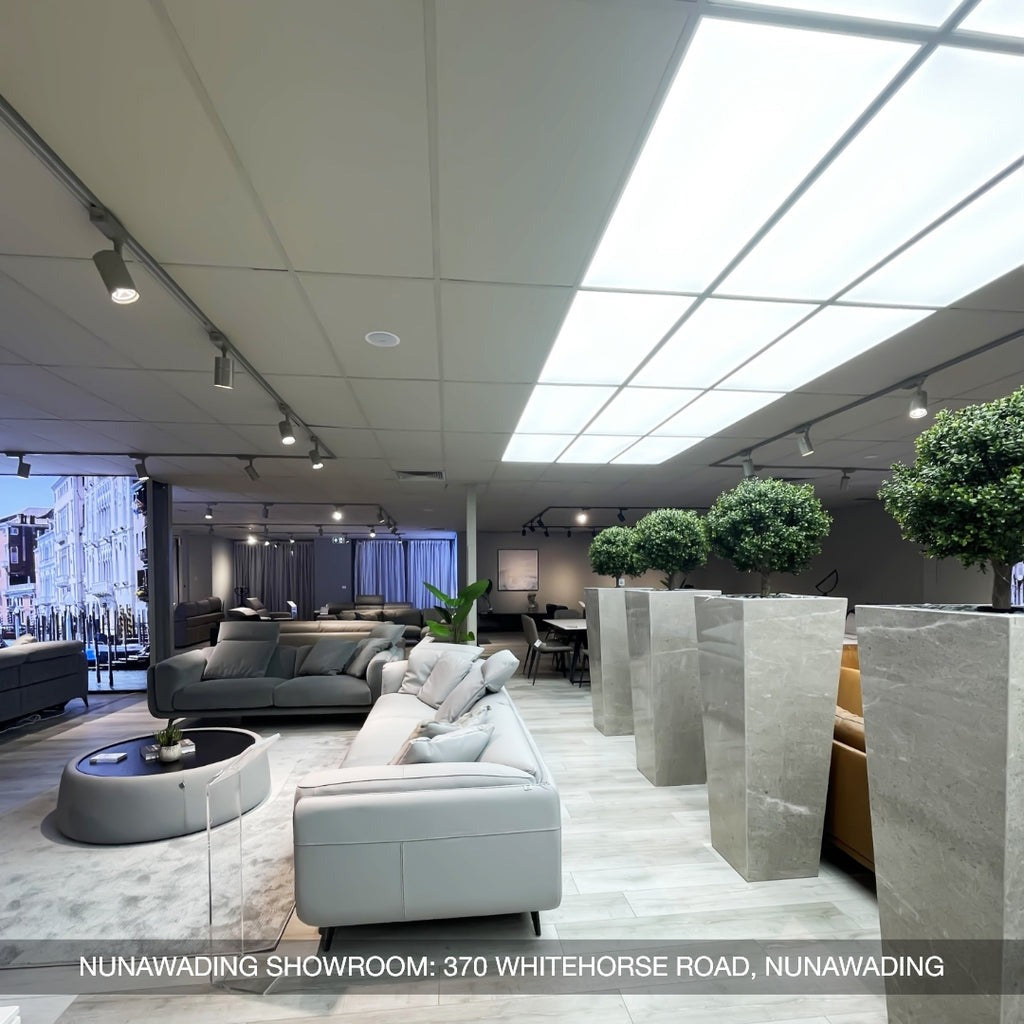The evolution of furniture is a fascinating story, and the sofa is a prime example of this ongoing journey. From its earliest incarnations as a status symbol in ancient civilizations to the comfort staple it is today in modern households, the sofa's transformation reflects changing societal needs, technological advancements, and design preferences. This article delves into the evolution of the sofa, exploring how this piece of furniture has transitioned over time. By examining the sofa's development, we gain insights into the broader evolution of furniture, reflecting the ways in which furniture has adapted to serve our needs and desires throughout history.
History Of Sofas - Before The Sofa
Before the plush comfort of modern sofas graced our living rooms, a rich history of seating solutions paved the way. Long before the word "sofa" even existed (it has Arabic roots and entered the English language around the 16th century), ancient civilizations relied on various forms of seating that served more practical than leisurely purposes.
In the golden age of Egypt (think Pharaohs and pyramids!), archaeologists have unearthed evidence of sturdy wooden benches used by royalty. These early forms of seating, often ornately carved, were a symbol of status and power rather than relaxation. Similarly, wealthy Greeks and Romans favored raised platforms and klismos, a type of chair with an elegant, curved back. While these offered some level of comfort, they were far from the plush havens we associate with sofas today.

Moving forward in the history of sofas, the Middle Ages saw a decline in elaborate furniture design. Homes were often drafty and uncomfortable, and seating remained primarily functional. Long benches and stools were common, often built from readily available materials like wood and stone. This period also saw the rise of the chest, a multifunctional piece that could be used for storage and seating alike.
Fast forward to the Renaissance, and a renewed interest in classical forms emerged. Italian artisans began crafting more elaborate seating options, including elaborately carved benches and settees. These pieces, while still somewhat stiff and formal, offered a glimpse of the evolving comfort priorities that would define future furniture design. It wouldn't be until the 17th century, however, that the true precursor to the modern sofa – the upholstered chaise longue – would appear, paving the way for the rich history of sofas to truly take off.
Evolution Of Sofa Of The Sofa
The Sofa In Antiquity
The term "sofa" traces its origins back to around 2000 BC in Ancient Egypt, derived from the Arabic word "suffah," meaning "bench." Reserved for the elite, including royalty, these early sofas epitomized opulence. In upper-class Greek and Roman societies, a chaise lounge-like version gained favor, allowing for reclining, especially around dining tables adorned with added pillows for enhanced comfort. Contrastingly, the lower-class Romans could only afford simple stone benches, missing out on the luxury of cushioned lounges.

The Medieval Sofa
Following the fall of the Roman Empire, the sofa experienced a prolonged hiatus during the Medieval period, reduced to a basic bench. The absence of distinct living rooms in medieval homes relegated social gatherings to open spaces centered around hearths, where wooden benches were the primary seating. The Church's influence, associating physical comfort with sin, contributed to the austere design of medieval couches. The sofa's resurgence awaited the Renaissance, as craftsmen rediscovered its potential as a comfortable and stylish piece of furniture.
The Rebirth Of The Sofa In The Renaissance
The Renaissance marked a departure from the austerity preached by the Church, embracing a newfound preference for comfortable living. Upholstery became integral to interior design, displacing Gothic-era materials with more luxurious options. Renaissance couches, initially emphasizing form over function, evolved with the addition of backs and arms, enhancing comfort. Italian designers led the charge, stuffing cushions with materials like horsehair and hay, laying the foundation for a more sumptuous seating experience.

The Baroque Period
The Baroque period, prominent in 17th-century French design, saw the emergence of the sofa prototype known as the double chair. This French creation featured softer cushions, broader seats, and taller backs, presenting a rectangular shape with fixed inner legs. The design not only catered to comfort but also elevated France as a leading authority in style and design during subsequent decades, influencing Europe as a whole.
Lord Chesterfield And The Chesterfield Sofa
In the 18th century, the Fourth Earl of Chesterfield, Lord Philip Stanhope, played a pivotal role in reshaping the evolution of sofas during the Restoration period. Commissioning a new sofa type, he introduced the iconic Chesterfield sofa, designed for multiple sitters without compromising their attire. This extravagant piece marked a shift towards brighter colors and more elaborate textiles, contrasting with the muted tones of the preceding Cromwellian era. Featuring leather, buttoned upholstery, and balanced back and arm heights, the Chesterfield became a symbol of poise and comfort, standing the test of time as a quintessential Restoration-era furniture piece.
Louis XIV And Louis XV Sofas
The cultural metamorphosis during the reigns of Louis XIV and Louis XV extended to the realm of furniture, revolutionizing the concept of comfort and aesthetics. The Louis XIV sofa, emblematic of its era, not only prioritized opulence but also found a distinct purpose as the preferred seating for the royal court in the grand palaces of the French king. As French nobility sought both luxury and physical comfort, skilled cabinet makers responded with the creation of novel pieces, including chaise lounges, settees, love seats, and the canapé—a smaller iteration of the cabriole sofa.

The 18th Century
The 18th century witnessed a transformative shift in sofa design, notably catalyzed by the influential Thomas Chippendale. Unlike earlier periods, Chippendale's designs seamlessly merged beauty with functionality, featuring deep seats that doubled as beds when needed. This century marked the sofa's transition from an exclusive luxury item for the wealthy to a ubiquitous household necessity.
The Industrial Revolution played a pivotal role, driving down furniture costs through the reduction of building material prices and the rise of mass production facilitated by innovations like the sewing machine. Simultaneously, the introduction of steel springs enhanced comfort, making sofas more accessible to the general populace. With this democratization of sofa ownership, designers began to refocus on form, marrying aesthetics with the newfound widespread functionality.
The Sofa In The 19th And 20th Centuries
The Victorian and Edwardian periods brought about profound transformations in sofa design. The fainting sofa emerged as a principal piece, deemed essential for the drawing-room or the so-called "fainting room," providing a dignified space for women to recover from hysteria-induced fainting spells.
The Victorian era embraced the ornate Rococo style, characterized by flowing wood carvings, while the Edwardian period witnessed a shift towards Mission-style furniture. Departing from intricate Rococo embellishments, Mission-style designers favored minimalism and clean lines, aligning with the preferences of the time. This style played a significant role in shaping interior design throughout the first half of the 20th century, contributing to the ever-evolving narrative of the sofa's history.
Modernism
In the wake of the early 20th century, the increasing adoption of sofas by middle-class families steered a transformation in design sensibilities, shifting from extravagance to functionality, particularly in the aftermath of World War I. The advent of design movements like Art Deco and Modernism marked a departure from the ornate Art Nouveau styles that characterized pre-WWI aesthetics. Modernism, in particular, revolutionized the evolution of sofas by streamlining design characteristics to their fundamental elements.

Rejecting superfluous embellishments, designers sought intrinsic beauty through geometric patterns, uniform colors, and clean lines, embracing a minimalist philosophy. Innovative materials like plywood, plastic, and fiberglass further accentuated these features, contributing to the creation of timeless pieces. Visionaries like Le Corbusier and Charles Eames played pivotal roles in merging comfort with practicality, leaving an indelible mark on contemporary sofa designs.
The Sofa In The 21st Century
The 21st century witnesses an ongoing evolution of sofas, dynamically adapting to the ever-changing demands of society. From the emergence of smaller, more intimate two- or three-person seaters in parlors to the prevalence of massive sectionals accommodating entire families, the sofa has become a reflection of societal shifts. Innovative styles such as pull-out couches, sofa beds, and futons mirror a culture characterized by increased transience and, perhaps, a measure of financial instability.
While the types, purposes, and materials undergo constant transformations, one enduring constant remains—the sofa, an enduring household staple and a cherished piece of furniture for many. In addressing contemporary needs, designers continue to redefine the sofa, exploring novel concepts, such as the role of sofas as a versatile seating solution for the elderly, seamlessly blending style and comfort to cater to diverse preferences and lifestyles.
Conclusion
The evolution of the sofa is a fascinating journey that reflects our changing values and priorities. From the rigid benches of royalty to the plush comfort of modern living rooms, the sofa has transformed alongside us. Today, the options are seemingly endless, with styles ranging from classic chesterfields to sleek sectionals. Even the concept of comfort has evolved, with recliner sofas offering the ultimate in relaxation. If you're considering a recliner for your home, be sure to consult a sofa buying guide to avoid the common mistakes when buying a sofa and find the perfect fit. Italian designed sofas, known for their exquisite craftsmanship and luxurious materials, might be a tempting option. No matter your choice, the rich history of the sofa ensures there's a perfect piece to elevate your living space and provide a haven for relaxation.





